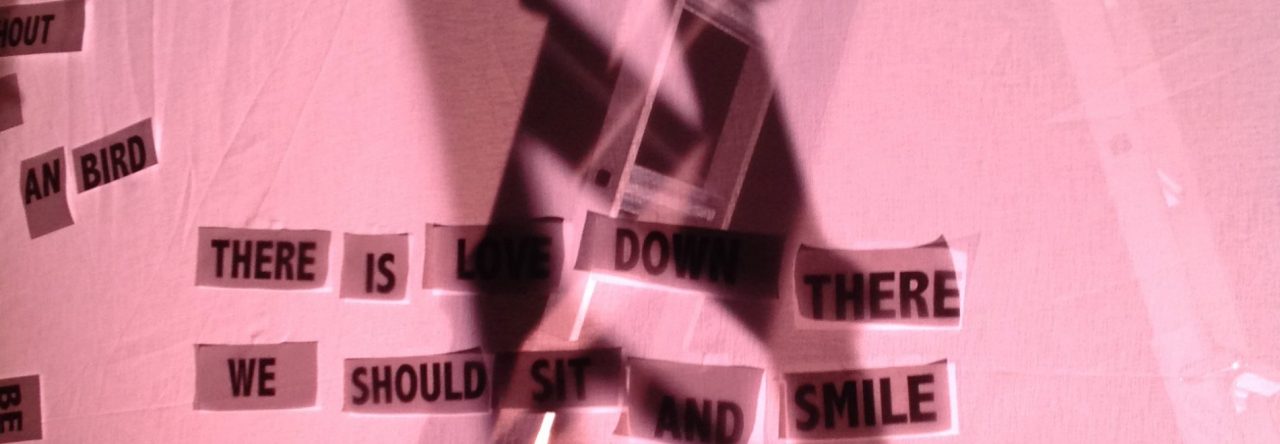Exploring (Un)creation Through Framing
by Kimberly Cleroux
In watching all of the compositions, the one that I chose to write my critique on was Group 3’s (Sabrina Yu, Amelia Simard, Narada Tipyananukul, June Hsu), where their main goal was to display the process of (un)creation. The composition consisted of a short film exploring the artistic method through stop motion animation, which included a series of photographs and a score mimicking that of a moving picture. Through choppy cuts and limited images, their short film explores the deconstruction of creative processes in different vignettes. The successful use of framing and movement draw in the viewer to directly interact with the film, creating a unique experience for each individual viewer.
The film’s framing constantly changes back and forth between that of a vertical and horizontal view, the former appearing as a perspective of media seen through a phone screen, while the latter follows the convention of a typical film screening. The intertwining between both uses of framing at different points of the narrative serves as a support to address the desired themes, as well as reinforcing the mood of the piece. The film begins with the use of vertical framing, breaking archetypes of a standard film shot on camera, as it resembles the perspective of a smartphone. This invites the viewer into a voyeuristic relationship with the subjects movements, as the point of view strongly suggests that the viewer is watching through a device working in its natural habitat. Watching motions unravel through a smartphone places the viewer in the position of the subject watching through the phone, allowing a stronger connection to what the spectator can assume is the “main character”. The intentional use of this perspective implies that there is a person or character holding the phone, the driving force of a narrative. The execution of setting up the film through a phone’s perspective was also used as a successful tool to set up the message later explored through sound. In the age of coronavirus, it’s a popular trend for people to learn new things through the resources that they have, usually through online tutorials on their smartphones. Introducing the perspective of technology early on without explicitly stating that this is the narrative taking place successfully introduced the topics to appear later on in the composition. The perspective of the framing not only gives a context into the film, but introduces subconscious emotions that the viewer will experience. The limitation of the frame makes the viewer feel small, isolated, and cramped. If the subject in a frame is barricaded by surrounding elements it generally creates an anxious kinesthetic response, similar to real life, as tight, closed spaces evoke similar emotion. This anxious feeling can also be caused by a sense of uncertainty. Many times viewers feel entitled to all of the knowledge on screen, they value time spent watching a film as an investment, and the maximum experience is valued by the complete understanding of a resolution. An open, horizontal frame displays more potential information on screen than its vertical counterpart. Restricting the amount of knowledge the audience has through the framing itself immediately creates a different experience, indicating that the viewer will have to do more than passively watch to understand the film. The use of defying video normalities through a vertical viewpoint, chopped movements, and cramped framing effectively set up a different experience for the viewer.
Due to the nature of the film being shown through photographs, the flow of motion is completely stripped from the composition, However, this does not affect the ability to effectively display movement. The flow between each movement is short, choppy, blurry, and periodical. Attempting to display choreography through a series of still photographs activates the spectators creativity and curiosity, by forcing them to fill in the spaces between each confirmed movement. Although you cannot see everything that is happening in the exact moment, our brains are powerful enough to put the pieces together and assume the rest. There is a theory talked about between artists used for other mediums, stating that the most effective way to show something scary is to not show it at all. If someone was told to imagine a monster under their bed, their imagination would create an image more terrifying than any photograph someone could show them. If they are to imagine a beautiful field of flowers, their imagination will think of something more striking than any field they could view can go to nearby. Application of this method can be used here too, even though we can only see sporadic sections of each motion, we can fill in the blanks and imagine a well choreographed flow of motion in our heads. In using stagnant motions through images, this group effectively used the viewers imagination as a tool to help them finish their own film. Through this, they created a very special experience for each individual viewer, as the motions of each event are choreographed and filled in by the spectator. This is not only shown in the dance sequences, but the painting, the ice cubes, and the composition with the guitar.
All of the tools used in this piece came together to create an intentional, meaningful work of art, allowing the viewer to reflect on current situations and events.
